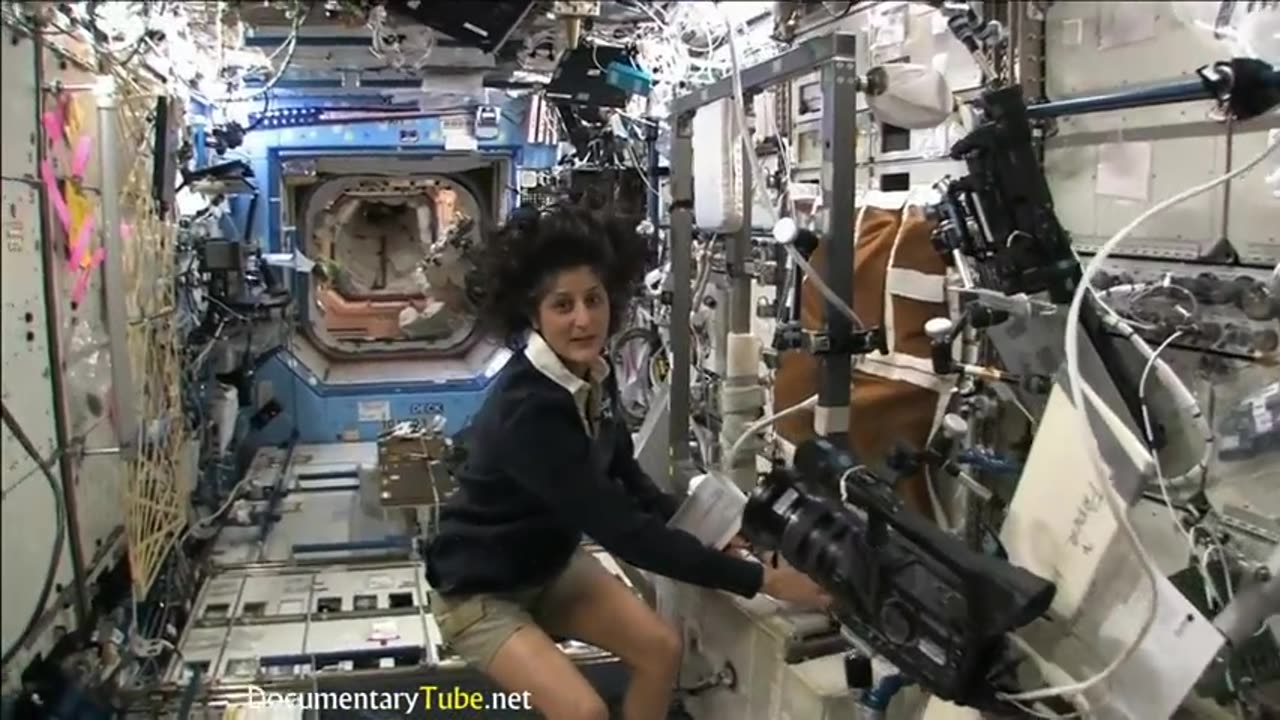Premium Only Content

How it's working space station
Orbital Mechanics: Space stations are placed in low Earth orbit, where they continuously circle the planet. They maintain their orbits by balancing the gravitational pull of Earth with their forward velocity.
Life Support Systems: Advanced life support systems provide astronauts with breathable air, water, and temperature regulation. They also manage waste and recycle resources to minimize dependence on resupply missions.
Structural Design: Space stations are constructed with durable materials to withstand the harsh space environment, including radiation, micro-meteoroids, and extreme temperatures.
Solar Panels: Arrays of solar panels capture sunlight and convert it into electricity to power the station's systems and equipment.
Modules and Laboratories: Space stations consist of interconnected modules, each serving a specific purpose. These can include living quarters, laboratories, storage areas, and more.
Research: Space stations offer a unique platform for scientific experiments that can only be conducted in microgravity. This includes studies in various fields like physics, biology, materials science, and medicine.
Crew and Rotation: Astronauts live and work on the station for several months at a time before returning to Earth. Crew rotations ensure a continuous human presence on the station.
Communication: Space stations communicate with Earth through a network of ground stations. This allows for data transmission, video calls, and real-time control of station systems.
Docking and Resupply: Spacecraft deliver supplies, equipment, and new crew members to the station. Docking ports enable these vehicles to attach safely to the station.
International Collaboration: Many space stations, like the International Space Station (ISS), are the result of international cooperation involving multiple countries and space agencies.
-
 LIVE
LIVE
SpartakusLIVE
2 hours ago#1 Saturday Spartoons || HUGE Announcement TODAY
6,932 watching -
 LIVE
LIVE
MattMorseTV
1 hour ago🔴Trump just BROKE Newsom.🔴
3,581 watching -
 18:14
18:14
Her Patriot Voice
1 hour agoWho Is WORSE for NYC: Trump Girl or Socialist?
91 -
 LIVE
LIVE
SavageJayGatsby
59 minutes agoSpicy Saturday with Mally! | Road to 100 | $300 Weekly Goal for Spicy Bites!
55 watching -
 LIVE
LIVE
Akademiks
6 hours agoRoc Nation & Meg Thee Stallion did a 7 HOUR Deposition with me. Drake Secret Kid Finally Revealed.
1,714 watching -
 LIVE
LIVE
Mally_Mouse
20 hours ago🌶️ 🥵Spicy BITE Saturday!! 🥵🌶️- Let's Play: Tower Unite!
121 watching -
 24:19
24:19
Stephen Gardner
2 hours ago🚨BREAKING: FBI Raid of John Bolton’s House Reveals THIS!
20.3K44 -
 8:31
8:31
MattMorseTV
4 hours ago $0.73 earnedTexas just did the IMPOSSIBLE.
22.1K54 -
 24:39
24:39
MYLUNCHBREAK CHANNEL PAGE
1 day agoInterdimensional Beings at Borobudur
29.4K17 -
 12:42
12:42
Scammer Payback
22 hours agoCalling Scammers who were Raided
9.46K10